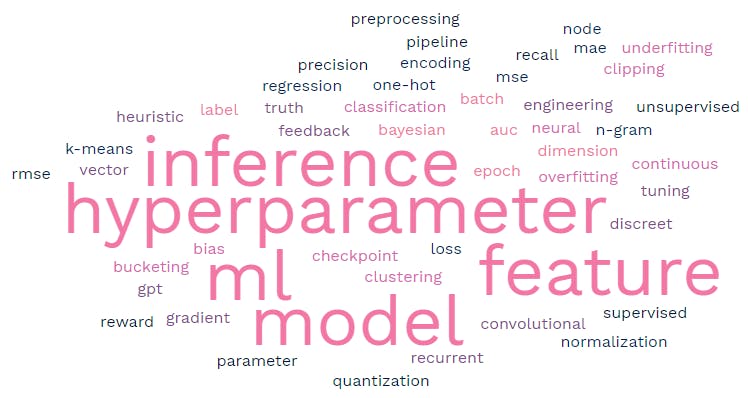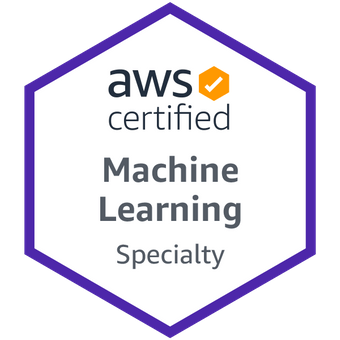I recently sat the AWS Certified Machine Learning - Specialty exam and wanted to share some tips and lessons learned so you can prepare for the exam.
First, note that although I work for Amazon Web Services (AWS), all opinions stated here are my own and are not the opinions of AWS or Amazon. The Machine Learning Specialty exam will test you own machine learning concepts, specific AWS services and well-architected concepts in relation to ML.
1. - Learn the terminology that data scientists, data engineers and ML specialists use.
Questions on this exam will use terminology that you need to be familiar with to successfully answer. Some of these terms are used differently in other contexts, for example "feature" meaning a specific attribute within a dataset in ML. This is not an exhaustive list, but a good starting point is this glossary of terms.

2. - Understand problem types and SageMaker built-in algorithms.
Many of the questions on the exam are scenario based, and you will need to identify the correct built-in algorithm to use for a specific challenge. Review the section of the developer guide that goes into detail on each built-in algorithm. Pay attention to the hyperparameters, ways to measure success and what type of features are required and what type of response is returned.
3. - Understand how to tune machine learning models.
This was the most challenging component of exam questions for me. You will be questioned on methods to improve models through additional training or hyperparameter tuning. You will need to know how to read a confusion matrix, and understand the difference between accuracy, precision, recall and F1 score. Look for these terms in the question, since you will often be asked to optimize for a specific metric. Understand when models may be overfitting or underfitting, and what you can do to improve the model. Refer to the developer guide algorithm sections for specific model tuning information, for example model tuning in XGBoost
4. - Don't ignore data preparation and endpoint hosting topics.
Knowing what algorithms to use and how to tune models is important for this exam, but understanding how to prepare data, train, and host endpoints is equally important. Learn when to use specific types of visualizations when analyzing training data, such as scatter plots and histograms. Understand why you may need to one-hot encode your features. Think about ways to cost optimize deployments using multi-model endpoints. Understand the limitations of file mode, fastfile mode and pipe mode for training.
5. - Set a goal & timeline to take the exam.
This is not specific to the ML specialty exam, but I recommend for any AWS certification exam that you want to obtain; Sign up for the exam in a reasonable timeline. I usually schedule within 1-3 months, depending on the topic. Signing up for the exam can help keep you on track with your studies. Once you sign up for the exam, sign up for a course and schedule time to take a practice exam. For this exam, I followed the A Cloud Guru course and the Tutorials Dojo practice exams.
Once you pass the exam, make sure you claim your badge at Credly.

Additional resources
Exam Sample Questions
SageMaker FAQ
SageMaker Developer Guide
AWS Machine Learning Blog
SageMaker end to end workshop
